 |
 |
 |
 |
 |
 |
| |
 |
|
 |
 |
 |
  |
  |
 |
 |
 |
 |
| 2010 PRITZKER ARCHITECTURE PRIZE | KAZUYO SEJIMA, RYUE NISHIZAWA
|
|
March 29, 2010
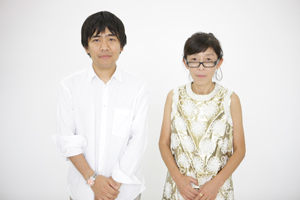 Kazuyo Sejima and Ryue Nishizawa, partners in the architectural firm, SANAA, have been chosen as the 2010 Laureates of the Pritzker Architecture Prize. The formal ceremony for what has come to be known throughout the world as architecture’s highest honor will be held on May 17 on historic Ellis Island in New York. At that time, a $100,000 grant and bronze medallions will be bestowed on the two architects. Kazuyo Sejima and Ryue Nishizawa, partners in the architectural firm, SANAA, have been chosen as the 2010 Laureates of the Pritzker Architecture Prize. The formal ceremony for what has come to be known throughout the world as architecture’s highest honor will be held on May 17 on historic Ellis Island in New York. At that time, a $100,000 grant and bronze medallions will be bestowed on the two architects.
In announcing the jury’s choice, Thomas J. Pritzker, chairman of The Hyatt Foundation, elaborated, “This marks the third time in the history of the prize that two architects have been named in the same year. The first was in 1988 when Oscar Niemeyer of Brazil and the late Gordon Bunshaft were so honored, and the second was in 2001, when Jacques Herzog and Pierre de Meuron, partners in a Swiss firm, were selected.”
He continued, “Japanese architects have been chosen three times in the thirty year history of the Pritzker Architecture Prize — the first was the late Kenzo Tange in 1987, then in 1993, Fumihiko Maki was selected, and in 1995, Tadao Ando was the honoree.”
The purpose of the Pritzker Architecture Prize is to honor annually a living architect whose built work demonstrates a combination of those qualities of talent, vision and commitment, which has produced consistent and significant contributions to humanity and the built environment through the art of architecture.
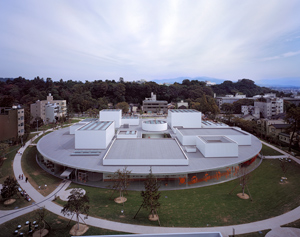 Pritzker Prize jury chairman, The Lord Palumbo quoted from the jury citation to focus on this year’s selection: “For architecture that is simultaneously delicate and powerful, precise and fluid, ingenious but not overly or overtly clever; for the creation of buildings that successfully interact with their contexts and the activities they contain, creating a sense of fullness and experiential richness; for a singular architectural language that springs from a collaborative process that is both unique and inspirational; for their notable completed buildings and the promise of new projects together, Kazuyo Sejima and Ryue Nishizawa are the recipients of the 2010 Pritzker Architecture Prize.” Pritzker Prize jury chairman, The Lord Palumbo quoted from the jury citation to focus on this year’s selection: “For architecture that is simultaneously delicate and powerful, precise and fluid, ingenious but not overly or overtly clever; for the creation of buildings that successfully interact with their contexts and the activities they contain, creating a sense of fullness and experiential richness; for a singular architectural language that springs from a collaborative process that is both unique and inspirational; for their notable completed buildings and the promise of new projects together, Kazuyo Sejima and Ryue Nishizawa are the recipients of the 2010 Pritzker Architecture Prize.”
While most of their work is in Japan, Sejima and Nishizawa have designed projects in Germany, England, Spain, France, the Netherlands and the United States, under their combined name SANAA. The first SANAA project in the United States began construction in 2004 in Ohio—a Glass Pavilion for the Toledo Museum of Art. Completed in 2006, it houses the museum’s vast collection of glass artworks, reflecting the city’s history when it was a major center of glass production.
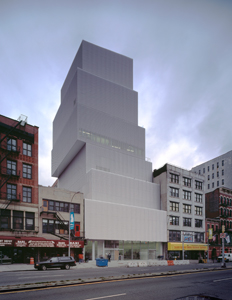 While that building was still under construction, the New Museum of New York City broke ground in 2005 at 235 Bowery. Completed in 2007, the building has been described as “a sculptural stack of rectilinear boxes dynamically shifted off-axis around a central steel core.” While that building was still under construction, the New Museum of New York City broke ground in 2005 at 235 Bowery. Completed in 2007, the building has been described as “a sculptural stack of rectilinear boxes dynamically shifted off-axis around a central steel core.”
The jury citation specifically mentions these projects as well as two projects in Japan: “the O-Museum in Nagano and the 21st Century Museum of Contemporarry Art in Kanazawa.” The Ogasawara Museum was one of their first projects together.
The De Kunstline Theater and Cultural Center in Almere, the Netherlands, and a more recent Rolex Learning Center in Lausanne, Switzerland are also major projects of SANAA. Other works in Japan include the Naoshima Ferry Terminal and the Christian Dior Building in Tokyo.
In Essen, Germany, in 2006, the Zollverein School of Management and Design was inaugurated in a new building designed by SANAA on an historical coal mining site. The building is described as an oversized cube (approximately 114 feet in each dimension) with an unusual arrangement of openings and windows of four different sizes.
The Serpentine Pavilion in London, their first built project in the United Kingdom, was in place for three months on the gallery’s lawn — the ninth such commission in the Serpentine’s series of pavilions. In France, a branch of the Louvre Museum in Lens will comprise some 300,000 square feet of construction.
In Valencia, Spain, SANAA provided a unique expansion solution to IVAM (Valencian Institute of Modern Art) in which their existing building housing eight galleries will be completely enclosed by a translucent skin covering an entire block, and thus creating new indoor/outdoor public spaces between the building and the skin. The proposed skin is a light weight perforated metal that allows daylight, wind and rain to pass through. Construction has not yet begun.
Both architects have extensive lists of completed works and projects as individual architects.
Upon learning that she was being honored, Kazuyo Sejima had this reaction: “I am thrilled to receive such an honor. I would like to thank the Pritzker (Hyatt) foundation, the jury members, the clients who have worked with us, and all of our collaborators. I have been exploring how I can make architecture that feels open, which I feel is important for a new generation of architecture. With this prize I will continue trying to make wonderful architecture.”
And a similar reaction from Ryue Nishizawa: “I receive this wonderful prize with great humility. I am very honored and at the same time very surprised. I receive and understand this prize as encouragement for our efforts. Every time I finish a building I revel in possibilities and at the same time reflect on what has happened. Each project becomes my motivation for the next new project. In the same way this wonderful prize has given me a dynamic energy that I have never felt before. I thank you very much.”
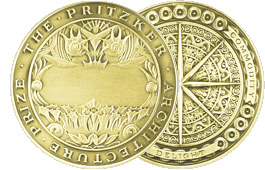 The distinguished jury that selected the 2010 Laureates consists of its chairman, Lord Palumbo, internationally known architectural patron of London, chairman of the trustees, Serpentine Gallery, former chairman of the Arts Council of Great Britain, former chairman of the Tate Gallery Foundation, and former trustee of the Mies van der Rohe Archive at the Museum of Modern Art, New York; and alphabetically: Alejandro Aravena, architect and executive director of Elemental in Santiago, Chile; Rolf Fehlbaum, chairman of the board of Vitra in Basel, Switzerland; Carlos Jimenez, professor, Rice University School of Architecture, principal, Carlos Jimenez Studio in Houston, Texas; Juhani Pallasmaa, architect, professor and author of Helsinki, Finland; Renzo Piano, architect and Pritzker Laureate, of Paris, France and Genoa, Italy; and Karen Stein, writer, editor and architectural consultant in New York. Martha Thorne, associate dean for external relations, IE School of Architecture, Madrid, Spain, who is executive director of the prize, augmented the jury citation, saying, “The architecture of Sejima and Nishizawa explores the ideas of lightness and transparency and pushes the boundaries of these concepts to new extremes.” The distinguished jury that selected the 2010 Laureates consists of its chairman, Lord Palumbo, internationally known architectural patron of London, chairman of the trustees, Serpentine Gallery, former chairman of the Arts Council of Great Britain, former chairman of the Tate Gallery Foundation, and former trustee of the Mies van der Rohe Archive at the Museum of Modern Art, New York; and alphabetically: Alejandro Aravena, architect and executive director of Elemental in Santiago, Chile; Rolf Fehlbaum, chairman of the board of Vitra in Basel, Switzerland; Carlos Jimenez, professor, Rice University School of Architecture, principal, Carlos Jimenez Studio in Houston, Texas; Juhani Pallasmaa, architect, professor and author of Helsinki, Finland; Renzo Piano, architect and Pritzker Laureate, of Paris, France and Genoa, Italy; and Karen Stein, writer, editor and architectural consultant in New York. Martha Thorne, associate dean for external relations, IE School of Architecture, Madrid, Spain, who is executive director of the prize, augmented the jury citation, saying, “The architecture of Sejima and Nishizawa explores the ideas of lightness and transparency and pushes the boundaries of these concepts to new extremes.”
In addition to the previous laureates already mentioned, the late Philip Johnson was the first Pritzker Laureate in 1979. The late Luis Barragán of Mexico was named in 1980. The late James Stirling of the United Kingdom was elected in 1981, Kevin Roche in 1982, Ieoh Ming Pei in 1983, and Richard Meier in 1984. Hans Hollein of Austria was the 1985 Laureate. Gottfried Böhm of Germany received the prize in 1986. Robert Venturi received the honor in 1991, and Alvaro Siza of Portugal in 1992. Christian de Portzamparc of France was elected Pritzker Laureate in 1994. Frank Gehry of the United States was the recipient in 1989, the late Aldo Rossi of Italy in 1990. In 1996, Rafael Moneo of Spain was the Laureate; in 1997 the late Sverre Fehn of Norway; in 1998 Renzo Piano of Italy, in 1999 Sir Norman Foster of the UK, and in 2000, Rem Koolhaas of the Netherlands. Australian Glenn Murcutt received the prize in 2002. The late Jørn Utzon of Denmark was honored in 2003; Zaha Hadid of the UK in 2004; and Thom Mayne of the United States in 2005. Paulo Mendes da Rocha of Brazil was the Laureate in 2006, and Richard Rogers received the prize in 2007. Jean Nouvel of France was the Laureate in 2008. Last year, Peter Zumthor of Switzerland received the award.
The field of architecture was chosen by the Pritzker family because of their keen interest in building due to their involvement with developing the Hyatt Hotels around the world; also because architecture was a creative endeavor not included in the Nobel Prizes. The procedures were modeled after the Nobels, with the final selection being made by the international jury with all deliberations and voting in secret. Nominations are continuous from year to year with hundreds of nominees from countries all around the world being considered each year.
Citation from the Jury
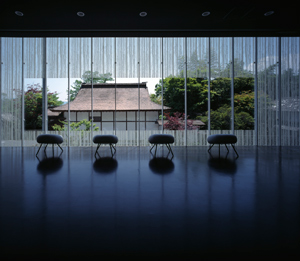 For more than 15 years, architects Kazuyo Sejima and Ryue Nishizawa have worked together in their collaborative part- nership, SANAA, where it is virtually impossible to untangle which individual is responsible for what aspect of a particular project. Each building is ultimately a work that comes from the union of their two minds. Together they have produced major commissions, such as the O-Museum in Nagano and the 21st Century Museum of Contemporary Art in Kanazawa (both in Japan), the Glass Pavilion at the Toledo Museum (Ohio), De Kunstline Theater and Cultural Center (Almere, the Netherlands), the New Museum of Contemporary Art (New York, NY), and the recent Rolex Learning Center (Lausanne, Switzerland). For more than 15 years, architects Kazuyo Sejima and Ryue Nishizawa have worked together in their collaborative part- nership, SANAA, where it is virtually impossible to untangle which individual is responsible for what aspect of a particular project. Each building is ultimately a work that comes from the union of their two minds. Together they have produced major commissions, such as the O-Museum in Nagano and the 21st Century Museum of Contemporary Art in Kanazawa (both in Japan), the Glass Pavilion at the Toledo Museum (Ohio), De Kunstline Theater and Cultural Center (Almere, the Netherlands), the New Museum of Contemporary Art (New York, NY), and the recent Rolex Learning Center (Lausanne, Switzerland).
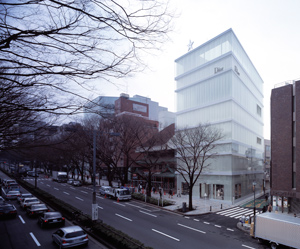 The buildings by Sejima and Nishizawa seem deceptively simple. The architects hold a vision of a building as a seamless whole, where the physical presence retreats and forms a sensuous background for people, objects, activities, and landscapes. They explore like few others the phenomenal properties of continuous space, lightness, transparency, and materiality to create a subtle synthesis. Sejima and Nishizawa’s architecture stands in direct contrast with the bombastic and rhetorical. Instead, they seek the essential qualities of architecture that result in a much-appreciated straightforwardness, economy of means, and restraint in their work. The buildings by Sejima and Nishizawa seem deceptively simple. The architects hold a vision of a building as a seamless whole, where the physical presence retreats and forms a sensuous background for people, objects, activities, and landscapes. They explore like few others the phenomenal properties of continuous space, lightness, transparency, and materiality to create a subtle synthesis. Sejima and Nishizawa’s architecture stands in direct contrast with the bombastic and rhetorical. Instead, they seek the essential qualities of architecture that result in a much-appreciated straightforwardness, economy of means, and restraint in their work.
This economy of means, however, does not become a simple reductive operation in the architects’ hands. Instead, it is an intense and rigorous investigation anchored in hard work and steely determination. It is a constant process of refinement, where each client’s program is fully investigated and multiple design possibilities are explored through numerous drawings and models that check every alternative. Ideas are considered and discarded, reconsidered and reworked until only the essential qualities of a design remain. The result is a deft union of structure and organization, of logical purpose and precise beauty.
It may be tempting to view Sejima and Nishizawa’s refined compositions of lightness and transparency as elitist or rarefied. Their aesthetic, however, is one of inclusion. Their approach is fresh, always offering new possibilities within the normal constraints of an architectural project as it systematically takes the next step. They use common, everyday materials while remaining attuned to the possibilities of contemporary technology; their understanding of space does not reproduce conventional models. 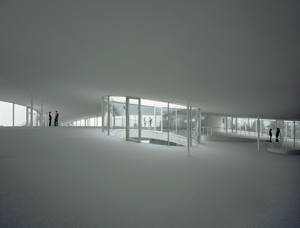 They often opt for non-hierarchical spaces, or in their own words, the “equivalence of spaces,” creating unpretentious, democratic buildings according to the task and budget at hand. One example is the Almere project in the Netherlands, with its many simple classrooms and workshops, all presenting privileged views of the sea. Another example is the Rolex Learning Centre in Lausanne, a space to be used by students day and night. Sejima and Nishizawa originally conceived it as a multi-story building, but, in the course of their deliberation, it became a single yet vast, flowing space. The building’s many spaces (library, restaurant, exhibition areas, offices, etc.) are differentiated not by walls but by undulations of a continuous floor, which rises and falls to accommodate the different uses, while allowing vistas across this internal “land- scape for people.” They often opt for non-hierarchical spaces, or in their own words, the “equivalence of spaces,” creating unpretentious, democratic buildings according to the task and budget at hand. One example is the Almere project in the Netherlands, with its many simple classrooms and workshops, all presenting privileged views of the sea. Another example is the Rolex Learning Centre in Lausanne, a space to be used by students day and night. Sejima and Nishizawa originally conceived it as a multi-story building, but, in the course of their deliberation, it became a single yet vast, flowing space. The building’s many spaces (library, restaurant, exhibition areas, offices, etc.) are differentiated not by walls but by undulations of a continuous floor, which rises and falls to accommodate the different uses, while allowing vistas across this internal “land- scape for people.”
The relation of the building to its context is of utmost importance to Sejima and Nishizawa. They have called public build- ings “mountains in the landscape,” believing that they should never lose the natural and meaningful connection with their surroundings. The New Museum in New York feels at home in the rough Bowery area of the city. Their glass-enclosed museums, such as the Glass Pavilion at the Toledo Museum of Art in Ohio, blur the borders between inside and out, providing direct and changing views to the surroundings.
While Sejima and Nishizawa have not published theoretical treatises to date, they are cerebral architects, whose work is based on rigorous investigation and guided by strong and clearly defined concepts. The appointment of Kazuyo Sejima as the director of the 2010 Venice Architecture Biennale is a tribute to this.
For architecture that is simultaneously delicate and powerful, precise and fluid, ingenious but not overly or overtly clever; for the creation of buildings that successfully interact with their contexts and the activities they contain, creating a sense of fullness and experiential richness; for a singular architectural language that springs from a collaborative process that is both unique and inspirational; for their notable completed buildings and the promise of new projects together, Kazuyo Sejima and Ryue Nishizawa are the recipients of the 2010 Pritzker Architecture Prize.
The Jury
ChairMan
The Lord Palumbo
Architectural Patron, Chairman of the Trustees, Serpentine Gallery
Former Chairman of the Arts Council of Great Britain
Former Chairman of the Tate Gallery Foundation
Former Trustee of the Mies van der Rohe Archive at the Museum of Modern Art, New York
London, England
Alejandro Aravena
Architect and Executive Director of Elemental
Santiago, Chile
Rolf Fehlbaum
Chairman of the Board, Vitra
Basel, Switzerland
Carlos Jimenez
Professor, Rice University School of Architecture
Principal, Carlos Jimenez Studio
Houston, Texas
Juhani Pallasmaa
Architect, Professor and Author
Helsinki, Finland
Renzo Piano
Architect and Pritzker Laureate 1998
Paris, France and Genoa, Italy
Karen Stein
Writer, editor and architectural consultant
New York, New York
Executive Director
Martha Thorne
Associate Dean for External Relations
IE School of Architecture
Madrid, Spain
About some of the major projects of SANAA, works by Kazuyo Sejima and Ryue Nishizawa
 O-Museum O-Museum
Nagano, Japan
The Ogasawara Museum was one of their first projects together, begun in 1995 and completed in 1999. Built on an isolated plateau on the side of a mountain, the site is an important heritage site where a castle from the 14th and 15th centuries once stood. The building’s shape follows the contours of the land, and is raised off the ground to keep the remains of the castle in sight, and also minimizes problems with rising damp from the ground. The entrance is from a square and ramp to a large lobby with a large window that frames the castle remains. Exhibition rooms and service area are in line with the lobby.
 Stadstheater Almere “De Kunstlinie” Stadstheater Almere “De Kunstlinie”
Almere, The Netherlands
In 1998, SANAA was chosen to design a municipal theater and cultural center that would serve both professional and amateur artists. The site is in a town located on a lake just west of Amsterdam. The project is one of many under a master plan developed by OMA. Completed in 2007.
 21st Century Museum of Contemporary Art Kanazawa 21st Century Museum of Contemporary Art Kanazawa
Kanazawa, Ishikawa, Japan
Located in an historic city on the north coast of the Japan, this circular building completely within a glass envelope can be viewed from all angles. There are central exhibition spaces of different proportions surrounded by areas for municipal services such as a library, a workshop for children and a conference room. There is space around the perimeter inside the glass to walk completely around the building. There are four inner courtyards enclosed by glass, and many of the rooms have skylights to provide diffused natural light where needed. This project began in 1999 and was completed in 2004.
 Christian Dior Building, Omotesando Christian Dior Building, Omotesando
Tokyo, Japan
Completed in 2003, the Christian Dior store on Omotesando Avenue in Tokyo called for four retail floors and one multifunctional level. The building could have a maximum height of almost 100 feet so it was decide to achieve the maximum volume and then divide the horizontal spaces of variable heights into retail floors alternated with spaces used for utilities, and all enclosed in glass. Translucent acrylic screens behind the glass can soften the building. At night, the building glows like a jewel in the urban landscape that surrounds it.
 The Toledo Museum of Art Glass Pavilion The Toledo Museum of Art Glass Pavilion
Toledo, Ohio
Begun in 2001 and completed in 2006, this addition to the Toledo Museum of Art was designed to house the museum’s collection of art glass, as well as a laboratory and glass-making foundry for the production of material. The plan, laid out on a single level, is based on a grid of interlocking glass rectangles linking one room to another. The walls of the rooms are of curved glass allowing views to adjacent and/or exterior spaces in various degrees of transparency or translucency. There are interior courtyards as well.
 Zollverein School of Management and Design Zollverein School of Management and Design
Essen, Germany
This project, begun in 2003 and completed in 2006, is located on the site of an old coal mine, near a carbon factory in a suburban area. Designed as a cube, approximately 115 feet to a side, it is a contrast to the large industrial buildings as well as the smaller scale residences around it. Divided into four floors of varying heights, windows of varying dimensions provide natural light and views of the surrounding areas. The first floor is a common study area completely open with no partitions.
 New Museum of Contemporary Art New Museum of Contemporary Art
New York, New York
In the heart of lower Manhattan, this high rise exhibition space increases the amount of wall space and keeps the building within local planning limits by staggering the different levels which makes possible skylights and terraces where the floors overlap. Begun in 2003, the building opened in 2007.
 Rolex Learning Center, EPFL (École Polytechnique Fédérales de Lausanne) Rolex Learning Center, EPFL (École Polytechnique Fédérales de Lausanne)
Lausanne, Switzerland
This project, begun in 2005, is designed to house a library, a center for the study of languages, offices, a cafeteria, restaurant and lobby. The roof and floor have a slightly undulating form. The main entrance can be approached from four sides by walking under the undulating floor slab. There are seven courtyards of varying sizes and shapes. These along with the variations in the space heights and sizes help create different atmospheres for different functions. This project was completed in 2009.
 Naoshima Ferry Terminal Naoshima Ferry Terminal
Naoshima, Kagawa, Japan
Begun in 2003 and completed in 2006, this building is a ferry terminal on a small island in the Inland Sea of Japan. A large (approximately 39,000 square feet) roof covers most of the site, and encompasses several glass enclosed areas that function as visitors center, cafe, event hall, and waiting area, as well as space for parking and bus stops and is described as an entrance hall of the island to accommodate the people together.
Credits
Text and images courtesy by Pritzker Prize/The Hyatt Foundation
Photo of Ryue Nishizawa and Kazuyo Sejima by Takashi Okamoto, Courtesy of SANAA
Photo of 21st Century Museum of Contemporary Art by SANAA, Courtesy of SANAA
Photo of New Museum of Contemporary Art by Hisao Suzuki, Courtesy of SANAA
Photo of O-Museum by Hisao Suzuki, Courtesy of SANAA
Photo of Christian Dior Building by Hisao Suzuki, Courtesy of SANAA
Photo of The Rolex Learning Center by Hisao Suzuki, Courtesy of SANAA

Pritzker Prize |
|
 |
  |
 |
|
|